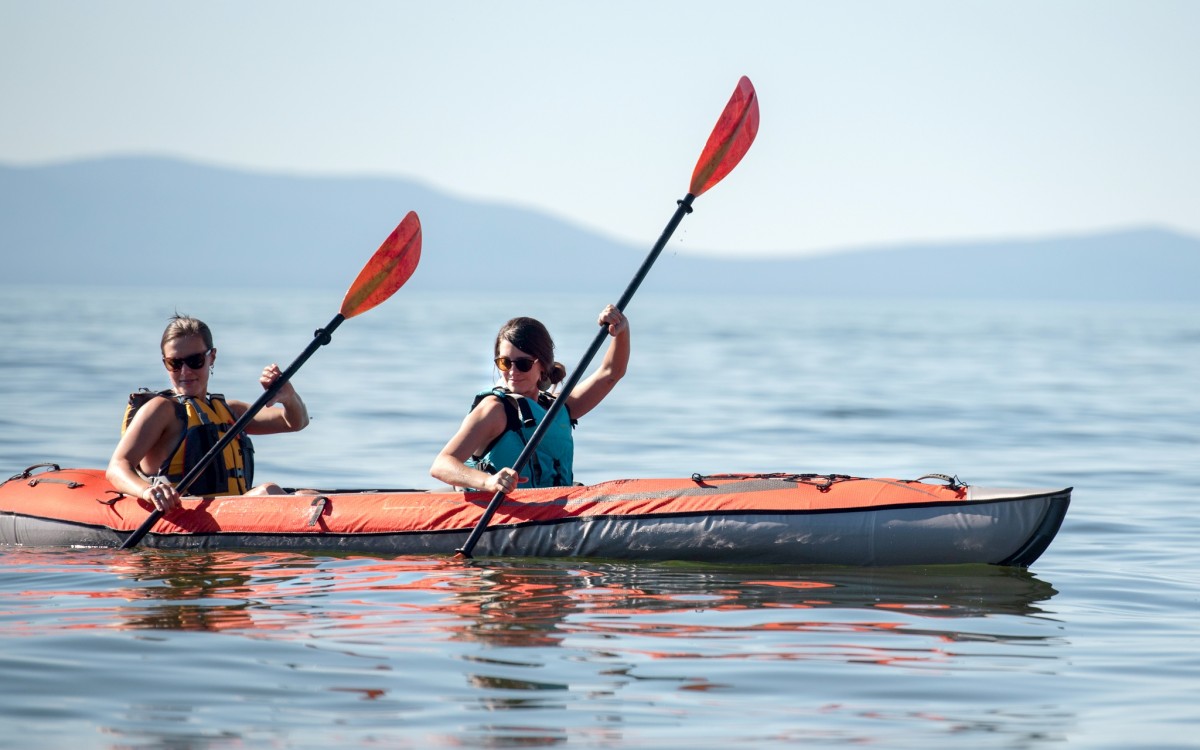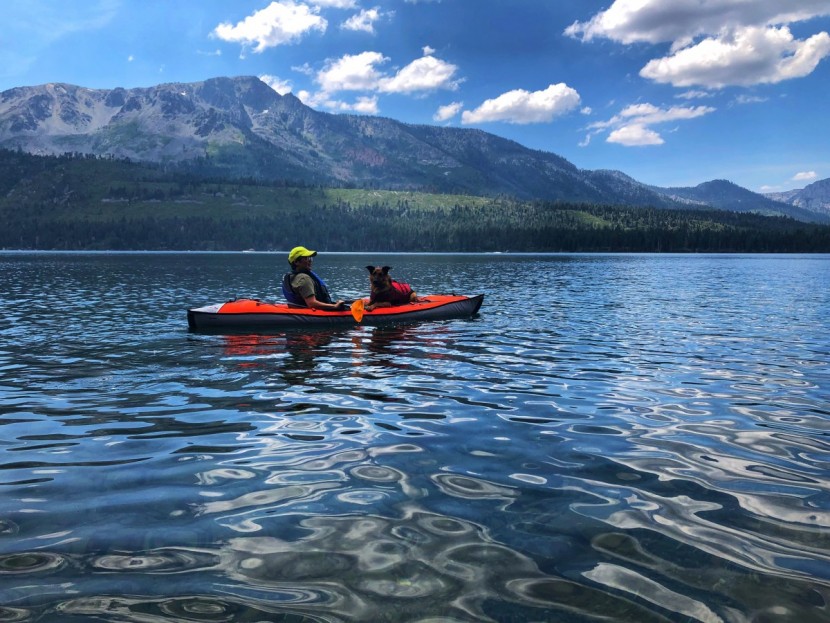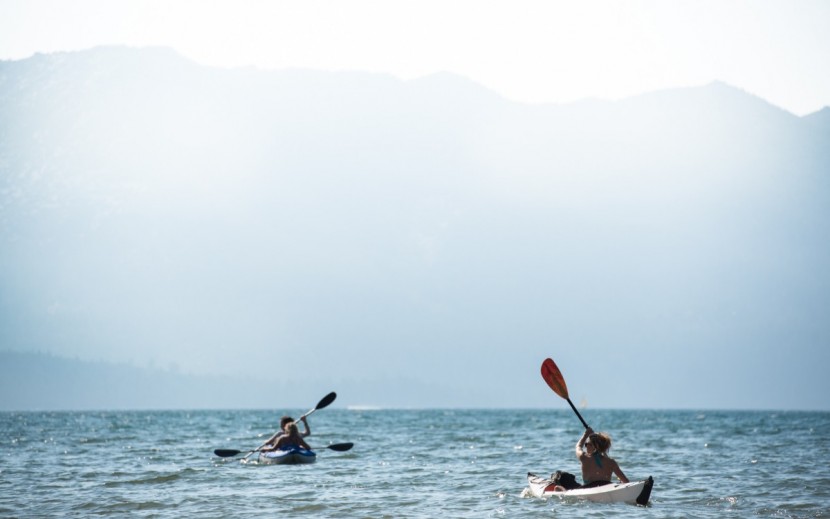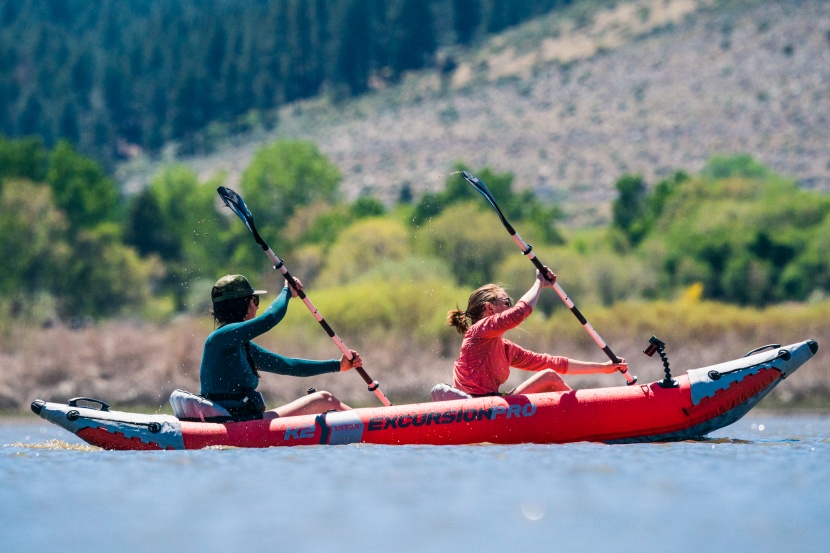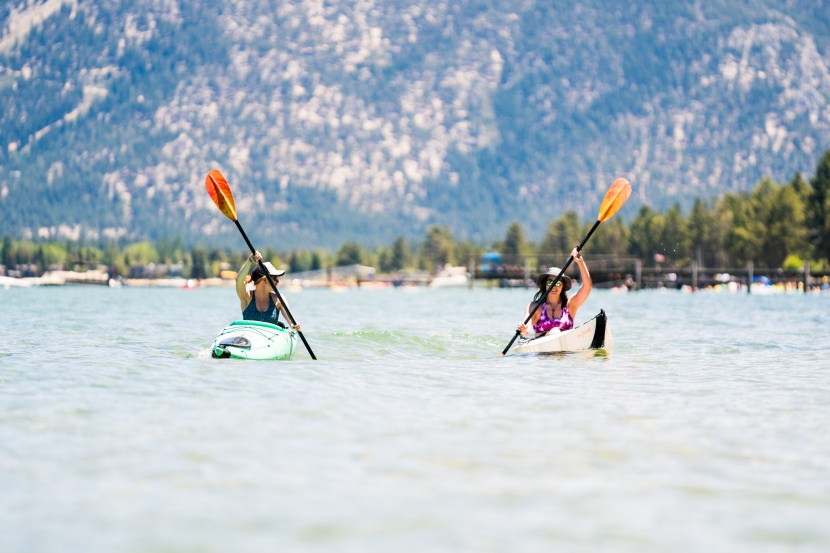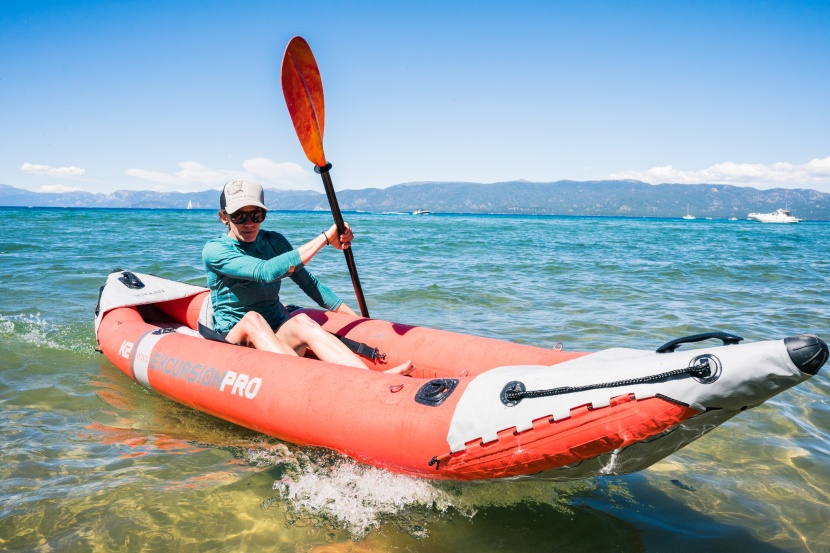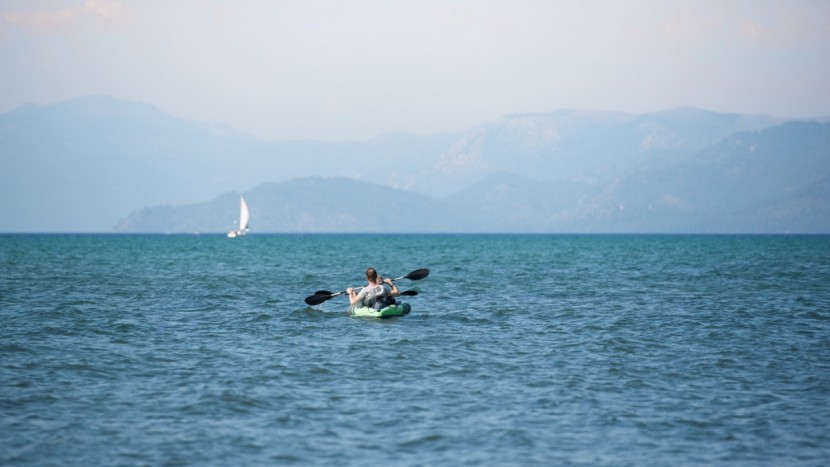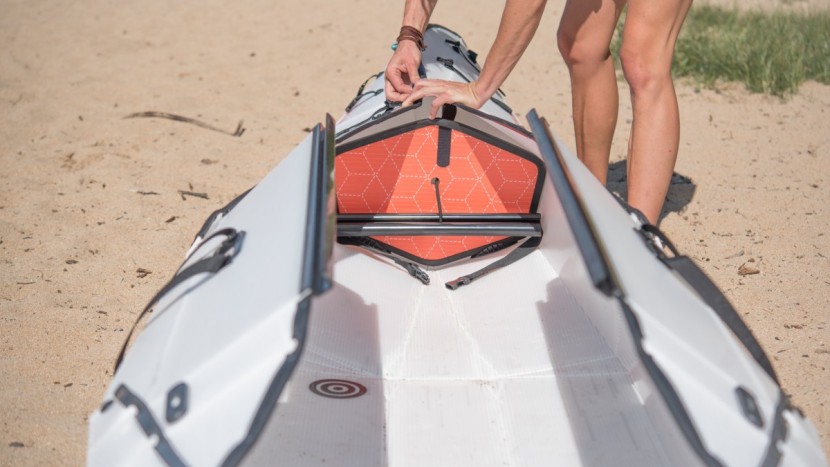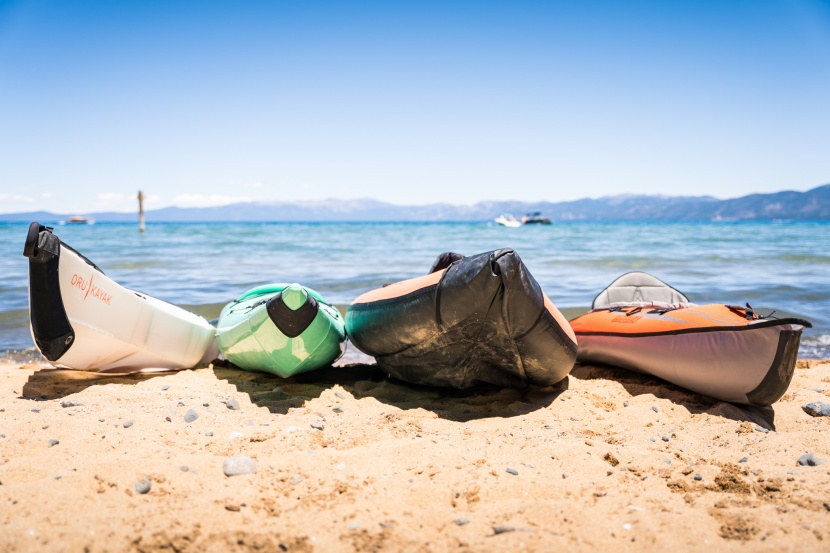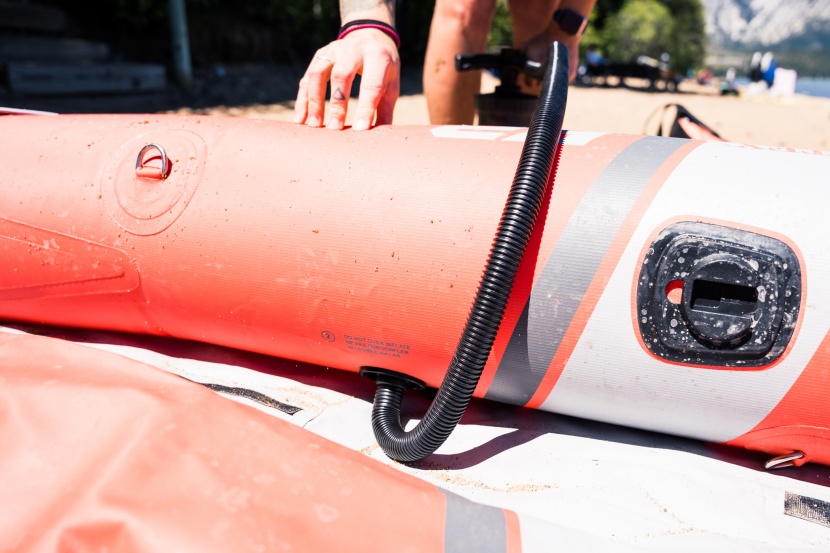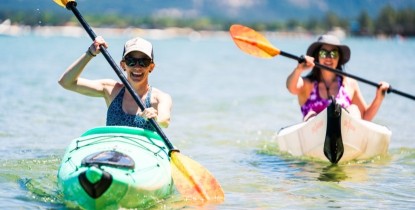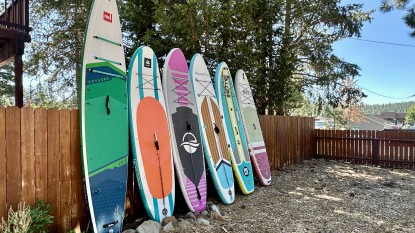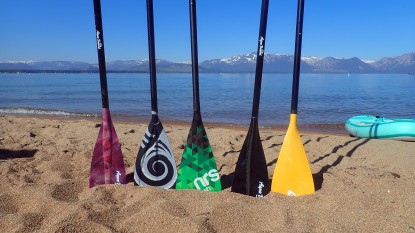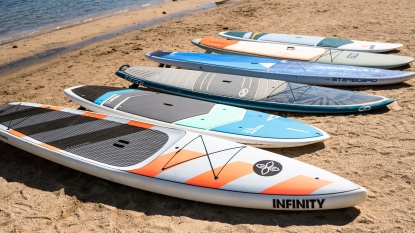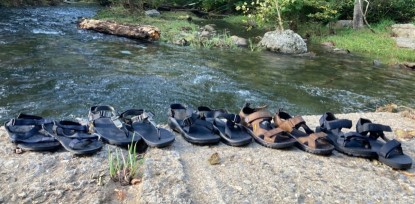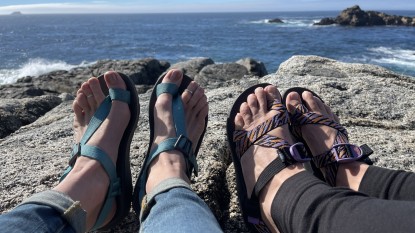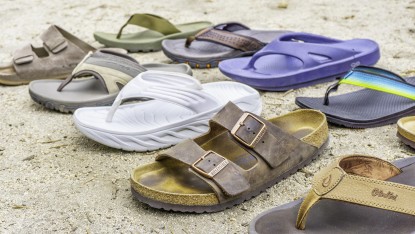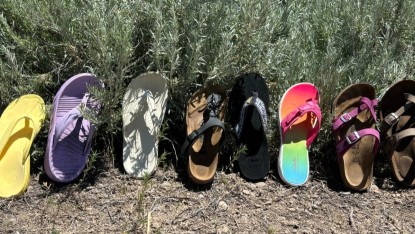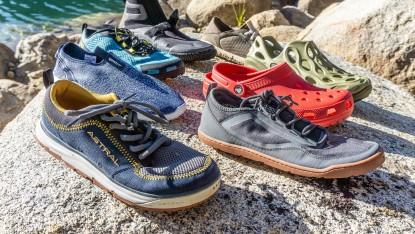The world of paddling, and the followers and adventurers it attracts, has steadily increased in recent years as new ways to get on the water become more available and diverse. From canoeing to kayaking to paddleboarding to rafting to rowing, there are so many ways to get out on the water, though kayaking is among the most popular. And with more kayak options on the market today than ever before, you too can join the ranks of kayakers out enjoying public lands and waters — and what better way than in a portable, inflatable kayak?
Aren't Inflatable Kayaks Just Pool Floaties?
No way! While you can find pool floaties on the market that resemble kayaks and may even come with flimsy paddles, true inflatable kayaks are NMMA certified. That is, they've been awarded the Boat & Yacht Certification by the National Marine Manufacturers Association (NMMA), stating that the craft is built to applicable standards set by the American Boat & Yacht Council (ABYC). To achieve this certification, boat manufacturers must have each boat model they sell physically inspected by an NMMA inspector every single year. This certification actually goes beyond the minimum manufacturing regulations required by the US Coast Guard, helping to ensure that the kayak you're taking out on the water is safer than, you know, a pool floatie.
So, not only are inflatable and compactible kayaks NOT pool floaties, they have certain benefits that traditional hardshell kayaks don't offer, and some of them perform just as well as — and in some cases better than — a rigid kayak.
Benefits of Inflatable/Packable Kayaks
The most immediately obvious benefit of an inflatable kayak over a hardshell kayak is its increased portability. As you can fold or roll your boat into a bag or box and carry it yourself, you no longer have to purchase and install expensive and cumbersome roof racks on your car to take your kayak out for an adventure. No more lifting a long, awkward boat solo over your head and hoping you strapped it down well enough to survive the traffic-filled highway commute home. Not only can you easily throw a packable kayak into the trunk of even an itty bitty Smart car, but you can also feasibly bring it with you on public transportation such as a train or bus. You can even bring your sleek little watercraft with you for international travel — try doing that with a hardshell kayak!
Another benefit of good things coming in small packages is that storing an inflatable kayak is a much less space-consuming chore. You can easily stick your packable yak in the back of your coat closet. Even the largest inflatable kayaks are just a fraction of the size to stow away as their rigid counterparts, making them a great option for apartment living or homes without garages or storage sheds. Some also weigh much less, helping their potential travel opportunities to increase exponentially.
A less obvious benefit of using an inflatable kayak is that it can offer some forms of durability that you can't find in a rigid kayak. Sure, being inflatable may lead you to believe that they're ready to pop at any given moment, and while they can get (usually patchable) holes, a lot of them can also take quite a beating. Inflatable kayaks are becoming more and more popular among whitewater enthusiasts for their ability to bounce off of rocks, rather than dealing with the scratching and scraping of a much more difficult to repair hardshell. Not all inflatables are created equal on this front, but they are typically heartier than your imagination may lead you to believe. This tenacity also comes in handy for rocky shore landings, scraping across sandy beaches, floating over submerged sticks and logs, and even having your canine friend join your on-water adventures.
Another big selling point for many inflatable kayaks is their (sometimes) lower price. Though you can spend thousands of dollars on inflatable boats, you can just as easily save a bunch of money and get a pretty darn good boat for a few hundred or less. Quite a few come as a complete package, with a top-rated paddle and pump already included (though none come with a life jacket — yet). The lower cost of inflatable watercraft over many traditional models can be a major factor in deciding how you spend your summers.
The US Coast Guard requires kids ages 12 and under to wear a USCG-approved personal floatation device (PFD, aka life jacket) in any vessel on the water, and a PFD must be present for every passenger 13 and over. The American Canoe Association also estimates that up to 75% of all paddler drownings could be prevented by actually wearing your life jacket. Laws vary state-by-state, so check local regulations before you head out!
Related: The Best Life Jackets of 2025So Which Yak is the Yak for You?
Many factors go into choosing the right kayak to fit your paddling style and goals. Before jumping in headfirst and buying the coolest looking kayak an internet search turns up, you should ask yourself the following questions:
What Type Of Paddler Are You?
Are you new to the sport of kayaking? If so, you'll want to choose an inexpensive, more stable kayak to see if you like it before purchasing a specific-use kayak or investing more heavily in a high-tech boat. Are you looking for a boat to use just once a summer or every weekend while it's warm? Then perhaps durability is more of a concern for you, as is having a versatile kayak that can handle different adventures you chose to have over many years. Are you a small or large paddler? This matters, as some boats may feel quite heavy to a 130-pound adult, while some may be a bit of a squeeze for folks over 6 feet tall. Or perhaps you're just on the market to get the kids out on the water so you and your spouse can enjoy a nice refreshing cocktail on the beach. In which case, you may not need anything fancy at all, and a boat with the right capacity (and the right price) will do the trick.
What Kind of Water Do You Want to Paddle?
Have you been watching YouTube videos of whitewater tricks and are ready to try out some new moves? Are you longing to surf big ocean waves like a boss? Have you been planning all winter what streams you'd like to fish? Or are you simply looking to paddle across the lake for an afternoon? The type of boat you choose plays into what type of water you can paddle it on. Wider boats are more stable, making them better choices for new paddlers and people still getting used to kayaking. Shorter kayaks are more maneuverable, making them better for quick-moving streams and dodging submerged objects. Longer vessels or those with V-shaped heels or rudders almost always track better, avoiding that annoying zigzag paddle path. And some kayaks have scupper holes or even self-bailers to drain water from the inside of the boat either while you paddle or after you're done, making them more comfortable for longer outings, particularly in wavy conditions when you're more likely to take on water. If you like taking on waves, some crafts have smaller cockpit openings, domed hull tops, and/or can hold a spray skirt, all of which can help keep excess water from entering your boat while you're out.
How Far Do You Want to Go?
If your goal is to paddle out from a beach, around for some sightseeing, and back again within an hour or two, you're unlikely to be as picky about the kayak you choose, and many will do just fine. However, if you'd like to paddle across that big wide lake — or around its circumference — making sure you've got a comfortable kayak that tracks well and minimizes drag and wind resistance can make all the difference. If every stroke you make wags the kayak back and forth, you'll do twice the work for half the distance gained. Do you live in a windy place? Then making sure you find a low-profile kayak instead of one that sits on top of the water will keep it from feeling like a sail. Are you hoping to take overnight adventures along the river? Then getting a kayak with plenty of storage space and a high weight capacity is essential for your style of aquatic expedition. Are you hoping to be able to paddle in remote waters and difficult-to-access locations? In this case, you may need to consider even more portable models to carry your kayak further before even getting on the water. Lightweight or convenient-carry kayaks (like a backpack yak) can help you get away from the crowds to enjoy peace and solitude as you commune with nature.
Do You Have a Specific Activity in Mind While You Paddle?
Just like hardshell kayaks, packable yaks are made for all sorts of specific purposes. From whitewater to flatwater, with features for fishing, shapes for touring, or simplicity for simple recreation. Angling kayaks may have foot pedals for hands-free power and maneuvering, touring boats tend to have increased tracking and more room for gear storage, and whitewater boats often can attach spray skirts to keep water out of the cockpit and are shaped differently to handle the rolling and often unpredictable nature of changing river conditions. For this review, we looked primarily at flatwater and recreational touring boats.
How Many People Do You Want In Your Kayak?
Are you seeking to get away all on your own? Grab a single boat. Or, are you looking to take your significant other or a friend with you? Then try a tandem. Many companies also offer 2+ or 3 person boats, which can fit up to three adults, or two adults and a child or dog. Want to take your large dog (or multiple dogs) with you? You may consider a small tandem or large single, depending on the size of the cockpit, the size of your dog, and your dog's comfort level with balancing on top of the hull. Or you could snag a boat that can do it all! Several manufacturers make tandem boats that can be adapted for a single person with gear and furry friends — or just an ambitious single paddler. Yet another benefit of packable yaks: the potential for adjustable seating arrangements.
How Much Time Are You Willing to Spend Setting Up?
One catch with the packable kayak market is the amount of time you'll spend setting up and taking apart your rig each time you use it. There's a wide range of complications you can own or avoid, depending on how much you value your time. Some kayaks have just 2 or 3 chambers to inflate and go together in a matter of minutes. Others have numerous pieces to zip, clip, or velcro each time you take your boat out on the water. While there's something to be said for owning the same nautical adventure wagon for a long period of time and getting familiar and fast with its setup, some will always take longer than others.
Some inflatable models have tons of chambers to inflate, and quite a few have numerous types of valves, requiring different adapters to fill with your pump or your lungs. A few have drainage holes to get out that extra water, but every inflatable needs to be dried before packing it away to avoid funky smells and mold. Some have floors that come out to facilitate faster drying, while others forgo a fabric-covered exterior to enable faster dry times. Whether you want to wait on the beach for them to dry, bring a towel to wipe them down, or set them back up in the backyard to let them air out, this is something to consider before purchasing your boat. Hard-shelled packable boats are much more forgiving when it comes to drying and will dry out as they sit in your closet instead.
How Much Do You Want to Spend?
The value of any piece of gear you purchase is always an important consideration. Particularly in the realm of watercraft, it's easy to drop several hundred or thousands of dollars on a single ship. But does that mean you've gotten the best kayak your money can buy? Not necessarily. While there are excellent kayaks out there that will part you from a large chunk of change, there are also a lot more affordable options. In our review, we tested products with a wide range of price tags. While some hold their value better than others, all have their merits. In general, spending less on a boat is a pretty good option for folks who really only get out a couple of times a year. For anyone wanting to have a reliable watercraft for all aquatic adventures, investing a little more in a better-performing boat is worth it.
Don't Forget the Essential Accessories
Last but certainly not least, it's important to note that some kayaks come with everything you need to get out on the water (aside from a life jacket) — paddle, pump, and fill gauge. Most include small repair kits or patches for emergencies. And some kayaks are just that — only a kayak, leaving you to still need to purchase the paddle, pump, and maybe a gauge. However, this isn't always a bad thing, as some of the kayaks we tested that include a full kit do so by including tiny pumps that take ages to use and flimsy paddles that are less effective in the water. Also, consider that you may already own a pump from an air mattress that can also be used for your kayak, and perhaps you can pick up a paddle at a garage sale or as an online bargain. And if it really comes down to it, most inflatable kayak manufacturers have additional accessories available for purchase along with your yak to give you the complete kit.
Conclusion
Owning a packable kayak may be the best, most liberating piece of outdoor equipment you ever have the pleasure of using. Being able to toss it in the car for any road trip “just in case,” take it with you on vacation around the globe, or keep it nearby for after-work paddles may change you from a casual kayaker to a serious paddle ninja. If you are ready to take a look, we have reviewed top-ranked inflatable kayaks to make the selection process simpler.

